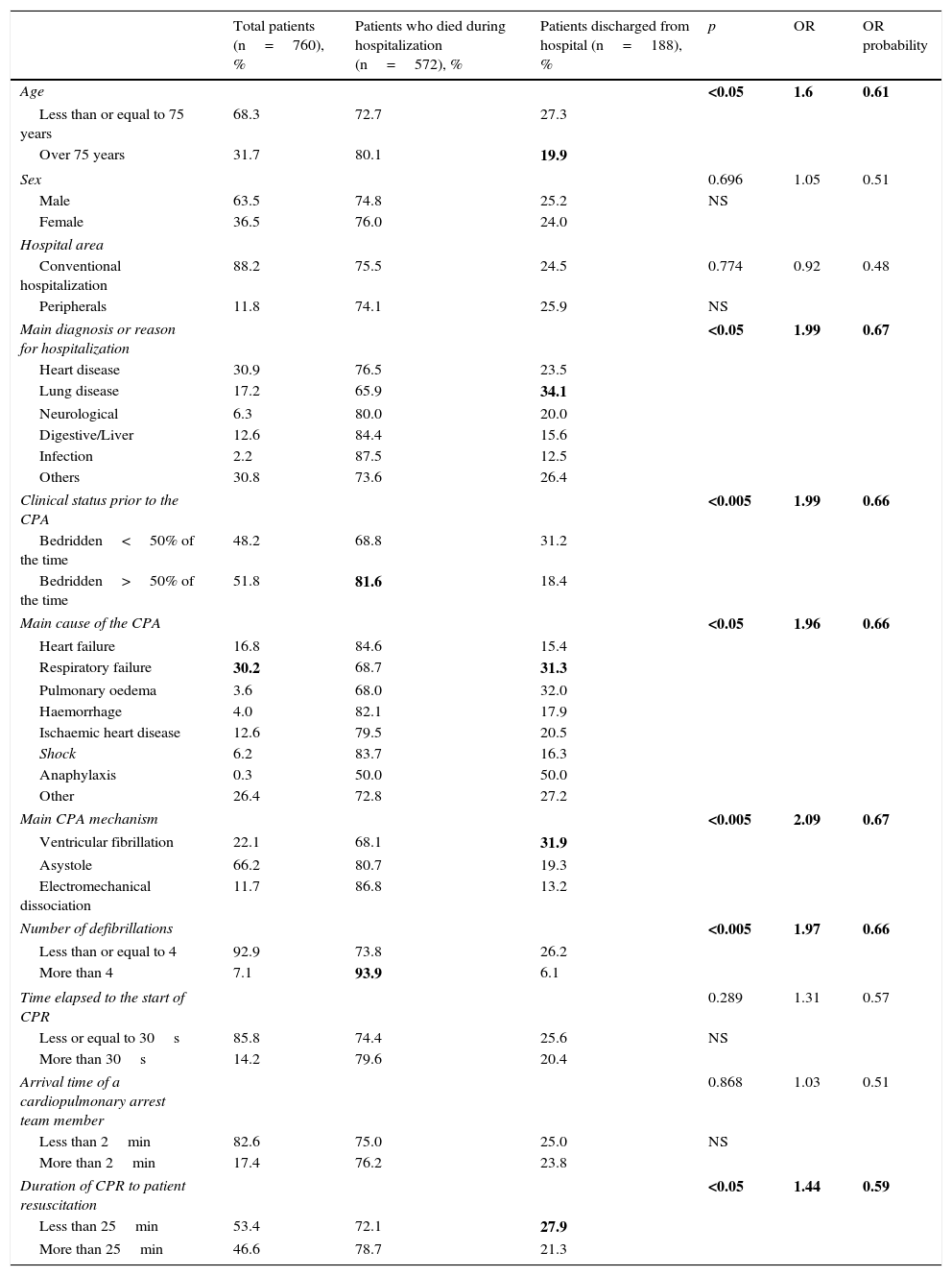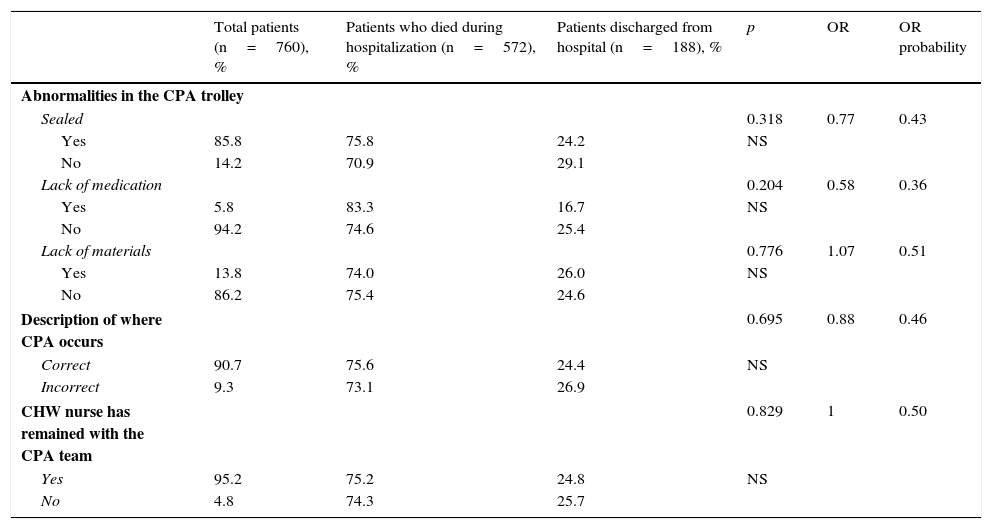The aim of this study is to analyze in-hospital cardiopulmonary arrests (CA) that took place in conventional wards and evaluate their prognostic factors.
Patients and methodRetrospective review of in-hospital CA which occurred in our hospital over a 9-year period. CA that took place in intensive care areas, emergency rooms and operating theatres were excluded from the study. The following data were collected: demographic data, cause and initial rhythm of CA, internal control data, time, place, methods and results after cardiopulmonary resuscitation (CPR) (recovery of spontaneous circulation, [ROSC], and survival at discharge [SAD]) and neurologic performance at discharge. Results were analyzed with SPSS® v. 20 predictive analytics software.
ResultsAverage age was 66.9±17.5 years; 63.5% male. CA team arrived in 1.75±0.74min on average, and the average length of CPR was 25.8±16.10min. First rhythm: (a) shockable rhythms=22.1%; (b) asystole=66.2%, and (c) pulseless electrical activity=11.7%. ROSC=51% and SAD=24.8%. Factors associated with a better prognostic (p<0.05): age, reason for hospital admission, patient's previous physical condition, principal cause of CA, number of defibrillations and average length of CPR.
ConclusionsDespite having studied several variables as prognostic factors for CA and some of them being statistically significant, early prediction for survival for an in-hospital CA remains uncertain. Our study suggests that applying rational organizational measures, 25% of in-hospital CA could be discharged from hospital in good condition, and therefore, these organizational and educational measures should be extended to large hospitals.
Analizar las paradas cardiorrespiratorias (PCR) intrahospitalarias acontecidas en las salas de hospitalización convencional y evaluar los factores pronósticos de las mismas.
Pacientes y métodoRevisión retrospectiva de las PCR intrahospitalarias acontecidas en nuestro hospital durante un período de 9 años. Fueron excluidas las PCR en áreas de intensivos, quirófanos y urgencias. Datos recogidos: características demográficas, etiología y ritmo inicial de la PCR, datos de control interno, horario, lugar, métodos y resultados tras la reanimación cardiopulmonar (RCP) (recuperación de la circulación espontánea [RCE] y supervivencia al alta hospitalaria [SAH]) y estado neurológico al alta. Los resultados se analizaron con el paquete estadístico SPSS® v. 20.
ResultadosEdad media 66,9±17,5 años; 63,5% hombres. Tiempo medio de llegada del equipo de PCR=1,75±0,74min, con una duración media de RCP=25,8±16,10min. Ritmo inicial: a) desfibrilable=22,1%; b) asistolia=66,2%, y c) actividad eléctrica sin pulso=11,7%. RCE=51% y SAH=24,8%. Factores asociados a un mejor pronóstico (p<0,05): edad, motivo de ingreso hospitalario, estado previo del paciente, etiología y mecanismo principal de la PCR, número de desfibrilaciones y duración media de la RCP.
ConclusionesA pesar de haber estudiado diversas variables como factores pronósticos de la RCP y haber obtenido significación estadística en alguna de ellas, la predicción precoz de la supervivencia ante una PCR intrahospitalaria sigue siendo incierta. En cualquier caso, nuestro estudio evidencia que mediante una aplicación racional de medidas organizativas, el 25% de las PCR intrahospitalarias podrían llegar a ser dadas de alta en buenas condiciones, por lo que deberían generalizarse planteamientos organizativos y docentes similares en los grandes hospitales.









